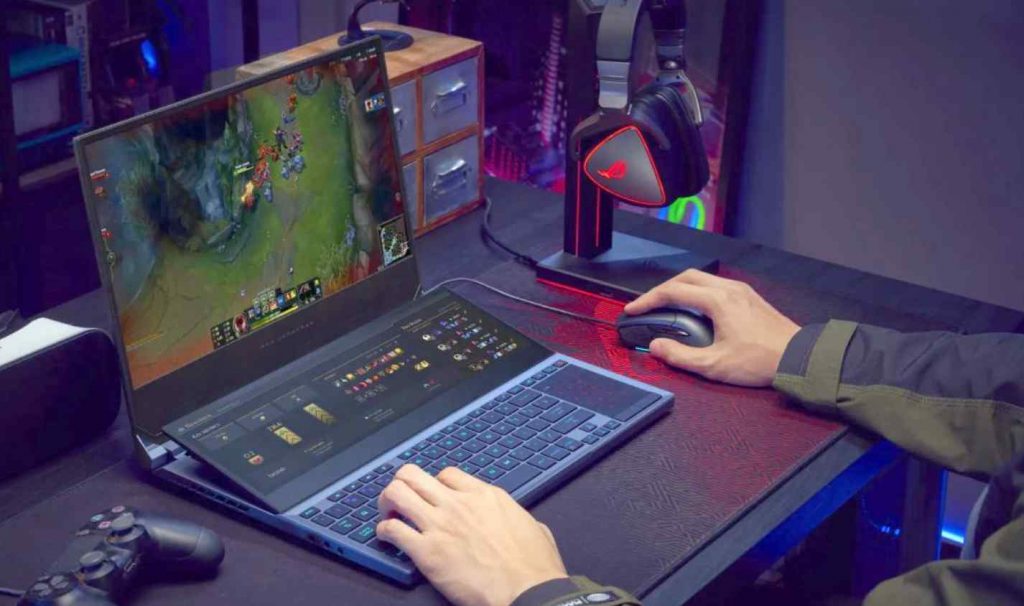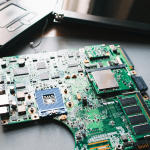There are times when we need to adjust the display’s brightness level depending on our surrounding environment.
For the majority of us, the setting is usually displayed automatically. Well, it turns out that it might not be enough.
Is it still possible to calibrate the brightness? This article will show you how!
To get a better picture on your computer, you’ll need to follow these instructions.
Adjust the brightness of your display
Contents
- 1 Adjust the brightness of your display
- 2 Reconciliation Brightness on Windows 10
- 3 Applications for increasing the brightness
- 4 How To Make Laptop Screen Brighter Than Max on Windows 10
- 5 Turning off Automatic Brightness
- 6 Reconciliation Monitor Brightness With Calibration
- 7 How To Make Laptop Screen Brighter Than Max Using The Keyboard?
- 8 Conclusion
You may adjust the brightness of your laptop’s screen in order to view it properly.
Finding a symbol on your keyboard that is called the Display would make it easy for you to adjust the brightness of the Display of your computer.
The F1 and F2 keys should be located in a prominent location.
The F2 key may be pressed on a laptop to change brightness.
Look in the Action Center, which is in the top-right corner of your screen. A ” Battery” icon appears when your battery is low. This icon also alerts you to changes in your display’s color temperature.
When you click the screen, you’ll be given an option to adjust brightness.
Today, most computer screens have a brightness level that can be adjusted by the user. This is to make it easier for the user to work and focus on their tasks.
Adjusting the brightness of your screen can help protect your eyes from excessive light emission. However, this depends on the selected setting.
On laptops, you may modify the screen brightness manually by selecting “System Preferences.” To adjust the brightness in a Chromebook, you will need to press the control key, A, and the letter B at the same time.
These keys may appear on the laptop’s keyboard or they may be on other keys.
If these options aren’t bright enough, you may need to acquire a calibration solution.
Reconciliation Brightness on Windows 10
Your glow buttons are a great tool for adjusting your screen’s intensity. This comes in handy when you’re working with certain programs or interacting with your computer in a dimly lit room.
You may access a unique menu using the brightness slider on your Windows Start Menu.
You may use the button on the left side of the screen to increase brightness and the button on the right side to decrease brightness.
You can also adjust the brightness by clicking and dragging your mouse up or down on the screen. You may also set a specific brightness level using the slider at the bottom of your screen.
Adjust the brightness of your computer by right-clicking your mouse and going to System -> Settings.
Then, click on the Display tab and choose a new setting for your brightness preferences. You can also use the System Preferences menu to choose a different setting for your computer.
To adjust the brightness of your laptop’s display, go to your System Preferences and choose Displays. Choose a new brightness setting for your laptop.
Applications for increasing the brightness
A screen-brightness app is one of these options.
You may change the system’s brightness levels by adjusting the slider. The software creates notifications when the screen’s brightness is altered.
Because your location and time of day impact how bright it is, this feature is not a substitute for the brightness slider in the display’s settings.
Brightness Slider, a bright saber battle-focused app, allows the gamer’s display to be brightened. This app darkens the display, thereby lessening the viewer’s glare.
After installation, you may adjust lux’s brightness by pulling on the slider.
This app allows you to adjust the bedroom lighting settings so that children don’t get too excited about bedtime.
While the feature’s primary objective is to reduce exposure to blue light, it also provides you with low-intensity illumination.
How To Make Laptop Screen Brighter Than Max on Windows 10
Look no farther than one’s computer.
The display is probably one of the computer’s most noticeable features and affects how productive a user can be. Selecting a display that is visibly bright is one step towards maximizing productivity.
As long as you have a Windows 10 laptop , chances are high you have reached a point where the contrast seems low.
The edges of your screen might be too hard to make out, or the colors might be washed out. Thankfully, you can easily fix this.
The Color Calibration tab may be found in the upper-right area of the pop-up window. After that, choose a color palette.
Another window will pop up. Click on the Advanced tab above to access more options.
The bottom of the window can be found there. Click Calibrate Display .
Finally, click Apply.
This is an easy and quick way to calibrate your laptop screen.
There is no particular order that the adjustments need to be performed in, but the best changes are usually made while calibrating the monitor.
- To begin, go to color Management.
- You may use the taskbar to make the adjustments. Press the Apply button at the top-right of the window. After receiving the display calibration, press the Save Changes button.
- In the bottom-left corner , click on Darken based on Averages. Doing so will change the brightness of your screen.
- The Lower radio button will turn to Green, while higher numbers will make the display darker.
- Open your settings tab and navigate to the Color & Appearance section.
- This is the gear wheel, found in the center of the window through which you can edit the color settings. Once done, click the Apply button at the bottom of the window. This will take a few seconds to take effect.
- Click System in the bottom right corner and the options you have will be displayed.
- Select Display from the upper-right area of the pop-up window. A new window will come up. Click Calibrate Display in the Display Settings section. Choose your display’s option in the drop-down menu. Pick Color Temp from the drop-down box. Set it to 6500 K. Click the Calibrate button. Wait for it to finish. Once the calibration is complete, a pop-up box will confirm that the calibration is successful.
- Scroll down the display page until you find Image Content Setting and choose that. The page may load for a few seconds. Once the Image Content Setting window has opened, click on the current color profile. Another pop-up window will appear. Click on the Evaluate button in order to save the new color profile. You can then see the name “Custom” next to the profile. This profile can be changed by going to Settings → Personalization → Color → Change Profile → Custom.
- It’s in the sliders at the top of the window. After that, click on the Color tab. Adjust the settings as you see fit.
- Then, under Display Adapter properties, click on Use Custom Color Profile. Choose A Generic Color Profile from the drop-down box. This will make sure your computer’s display is calibrated properly. Now, click on Save and Apply.
- This will cause black areas to appear lighter and white areas to appear darker. If you want to change the background color, click the color box and select one. Make sure to turn on the Color Calibration Mode checkbox in order to apply
- In the upper-right corner of the settings. This is the last step of the calibration process. The computer screen should now look brighter.
- After that, decide if you want to keep those settings, or reset them to the original ones. After you do, click Calibrate.
- Select the Advanced tab. It should be the first option on the left-hand side of the window. Adjust the parameters as necessary. Click Apply.
- To go to the bottom of page, press Ctrl+F (or Cmd+F on Mac). You can also navigate to this setting by right-clicking anywhere on the screen and selecting Properties. Then navigate to the Color Calibration tab. Adjust the sliders to change the contrast and brightness to your liking.
- Click Calibrate Display again. The capitalization of the name may be a typo, depending on your language. Press Enter to confirm the changes. The display should now be brighter than before.
- Make any necessary adjustments in the submenus. Click Save.
Turning off Automatic Brightness
Batteries are healthy for your eyes, your body, and the environment. They power all of our electronic devices, and they contribute to greenhouse gas emissions and air pollution.
You may temporarily set this to Maximum brightness.
- The first step is opening the Windows Control Panel. Then, go to System Preference. Then, choose Hardware and Sound. After that, click Change plan settings. Then, adjust the slider as you wish.
- You may either utilize the software tool AutoBrightness or follow the steps below. On the left, find the drop-down menu labeled “Light”. Metering may be adjusted from 100% to 0%. Then the bank of sliders should be moved from left to right. Each slider moves the Light bar in increments of 10%. The slider labeled “Brightness” adjusts the brightness of the display. The slider labeled “Contrast” works in conjunction with the “Brightness” slider.
- Look for the Windows logo in the bottom-right corner of your screen.
- To begin, open the file.
- “Systems Preferences” and then “Brightness”, or “Brightness” in the tab bar, lets you adjust the brightness of the screen.
- Select the Hardware and Sound option in the Control Panel.
- Change plan settings by re-clicking the button.
- By sliding the slider, you may reduce the brightness or increase it.
Reconciliation Monitor Brightness With Calibration
Calibration may be required if you use a computer monitor.
A color calibration wizard is a useful tool that can help you improve the color accuracy of your computer screen. Simply navigate to Start > utilities Display Brightness and click your brightness setting.
Select Advanced Display Settings and then Display Energy Saver.
Your display brightness can be adjusted by sliding the Auto brightness slider to your preferred setting.
Click the Color Management, Advanced, and Calibrate Display button under the Color Management tab to begin the calibration process.
Users of MacBooks may even decide that the brightness should be 100%.
Under System Preferences > Display > Color > calibrate or + Calibrate depending on your OS, you’ll find the color calibration assistance.
Check your performance against the recommendations: 1. If the color matches, the site says you’ve done well. 2. If red dominates more than green, your color-calibration skills need a tune-up.
You may have opted to dim the brightness to save power, but the display most likely still isn’t calibrated correctly.
The specified brightness is restored by pressing the brightness button or the sunlight symbol.
How To Make Laptop Screen Brighter Than Max Using The Keyboard?
You may be able to adjust brightness with the FN key by pressing F1 followed by FN at the same time.
As affect of pressing the F2 my FN key, the brightness of your screen will increase. It is a must-have for any affiliate marketer.
Check the function button for the brightness level. The exact key combination may vary by manufacturer.
You may need to carry or activate the fN key by pressing it a few times, or activating some other key. Disable the FN key on your Huawei MateBook laptop computer, and then press F2 using your keyboard.
Conclusion
You may have made an amazing discovery if your computer monitor has a color temperature problem.
Luckily, it is very common. Color temperature refers to the temperature that a monitor’s display is set at.
The brightness to contrast ratio is a means of measuring how bright or dark a lamp or screen is. A certain brightness to contrast ratio is preferred in every profession, and even for everyday use.
For example, graphic designers often prefer a certain brightness to contrast ratio to project their ideas.
You’ll need a sorting brightness of 60 lux or higher to realize the most optimal color temperature.
Aside from the color temperature, the blue level is also very important. This level is also known as the CIE Lab value.
The higher the blue level, the brighter your laptop display will be. To boost color temperature to 6500K, you can adjust all the lights in the room.
Artificial lighting also affects the quality of the colors. You can try using wood, glass, and aluminum foil to improve your screen’s color temperature.
Thank you so much . Thank you for conducting this experiment with us.




